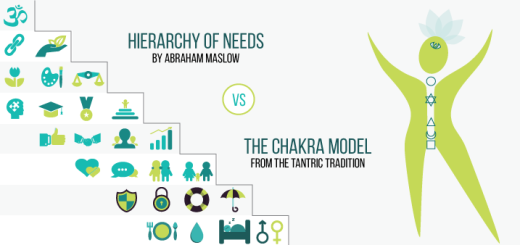The building blocks of the Universe, and why they matter to your health and happiness
0One of the most famous equations of all time (and one of the most elegant and profound) is Einstein’s E=mc2, where E represents energy, m represents mass, and c represents the speed of light. Physics professors Brian Cox and Jeff Forshaw explain the significance of an elegant equation in their book Why Does E=mc2?: (And Why Should We Care?). They write: “The wonderful thing about equations is that they can reveal deep connections between qualities that are not immediately apparent from the results of experiments, and in doing so can lead to a much deeper and more profound understanding of nature.”(1) E=mc2 was profound and world-changing because it established a precise relationship between three seemingly (at the time) unrelated entities: energy, mass, and speed of light. Albert Einstein himself wrote: “It followed from the special theory of relativity that mass and energy are both but different manifestations of the same thing — a somewhat unfamiliar conception for the average mind.”
While it might seem like a no-brainer today, in 1905, this was a revolutionary statement. Brian Cox and Jeff Forshaw write: “Before Einstein, no one had dreamed that mass could be destroyed and converted into energy because mass and energy seemed to be entirely disconnected entities. After Einstein, everyone had to accept that they are different manifestations of the same type of thing. […] Crucially, nature does exploit the opportunity – it is possible to convert mass into energy. If nature didn’t allow this to happen, then we would not even exist.”(1) In addition, E=mc2 shows us that any mass, even at rest, has a tremendous amount of inherent energy. How tremendous? Using the same formula, we can calculate that for every 1 kilogram of mass, you get 9 × 1016 joules of energy out, which is the equivalent of 21 Megatons of TNT. That’s a lot of energy.

To physicists, this type of revelation is really exciting because they are always trying to uncover “the fundamental building blocks of the universe and the forces of nature that stick them together.” (1) Identifying those is not an easy task because “nature’s underlying simplicity and beauty are often hidden.” (1) E=mc2 is an example of an equation that identifies the three main building blocks of the Universe (matter, energy, and light) and shows their connection and interaction with one another.
Interestingly, what was revelatory to a scientist of the 20th century would sound like a simple statement of fact to a scholar of Samkhya philosophy, which informs the traditions of both yoga and Ayurveda. The entities of mass (matter), energy, and light have been considered the building blocks of the Universe by Samkhya philosophy for hundreds of years. One of the great Vedic sages, Kapila, who lived in the 6th century BCE, described the origins of the Universe as an interaction between two original entities, Purusha and Prakriti. Purusha is said to be pure energy, formless and colorless; it is often called pure Consciousness. Prakriti is the primordial matter, a reservoir of limitless creative potential that consists of three fundamental forces called the gunas (sattva, rajas, and tamas). Once Prakriti becomes illuminated by Purusha, it manifests as the Universe through the interplay of those three primary forces. According to Samkhya philosophy, the Universe begins with a massive amount of energy being released from the original matter. These three forces that are released – tamas (substance), rajas (energy), and sattva (light) – are said to be the building blocks of the Universe and appear in different proportional quantities in everything that exists, including the human body and mind.
Some physicists would probably frown at these, more metaphysical, interpretations of those foundational entities. Physicists seem to concern themselves mainly with how energy, mass, and speed of light behave in teeny-tiny things, like atoms and particles, and massive things, like planets and galaxies. But to a scholar of Samkhya philosophy, this is all the same. If the interaction between mass, energy, and light is a law of nature, then it applies to all of nature, in all its manifestations, whether it’s an atom, a planet, or a human cell.
Both yoga and Ayurveda are more interested in understanding the human body and mind than the movement of the planets. Energy, matter, and light manifest in the human body in many different ways on physical, physiological, mental-emotional, and spiritual levels. They also form the basis of our personalities and define our interactions with the world around us. Next time, we will explore how understanding of the proportional quantities of energy, matter, and light within our systems can help us improve our health and happiness – tune in!
[jetpack_subscription_form]
References
- Why Does E=mc2?: (And Why Should We Care?) by Brian Cox and Jeff Forshaw (affiliate link)
- Yoga and Ayurveda: Self-Healing and Self-Realization by David Frawley (affiliate link)
- Textbook of Ayurveda: Fundamental Principles by Vasant Lad (affiliate link)



















